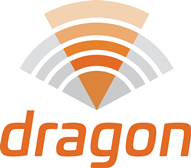Work plan — Work packages
The work plan of the project, as shown in Figure 3.1, has in total eight WPs: two non-technical WPs for management, dissemination, exploitation and standardization activities and six WPs for technical tasks.
Special attention is paid to the definition of the interfaces between the work packages that are identified in this figure and the text below. The work is efficiently split in order to have interfaces lean enough to allow for a high degree of independence, but sufficiently rich to exploit the synergies between the WPs and to ensure proper synchronization.

